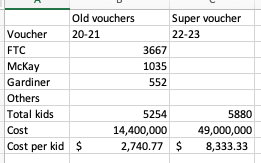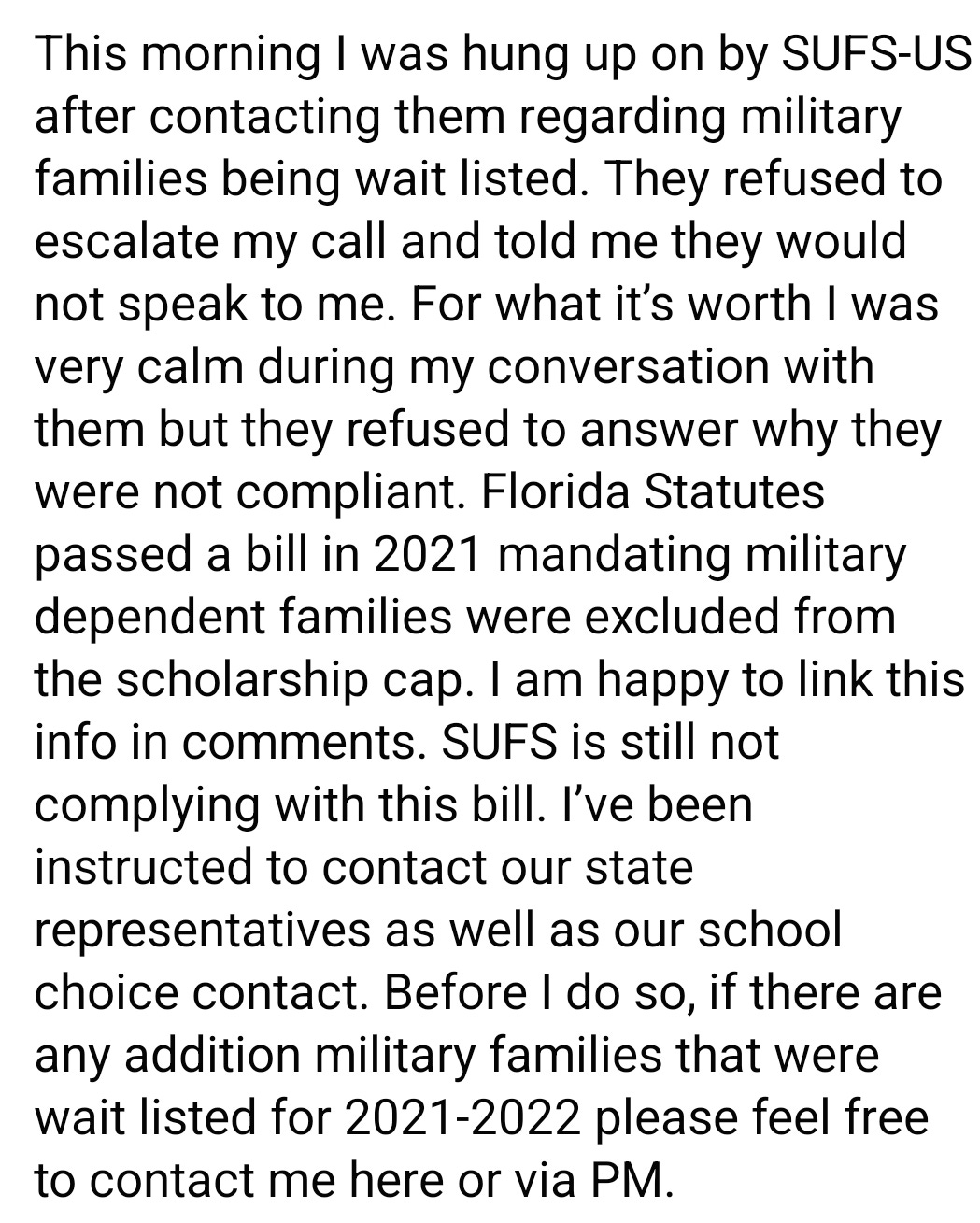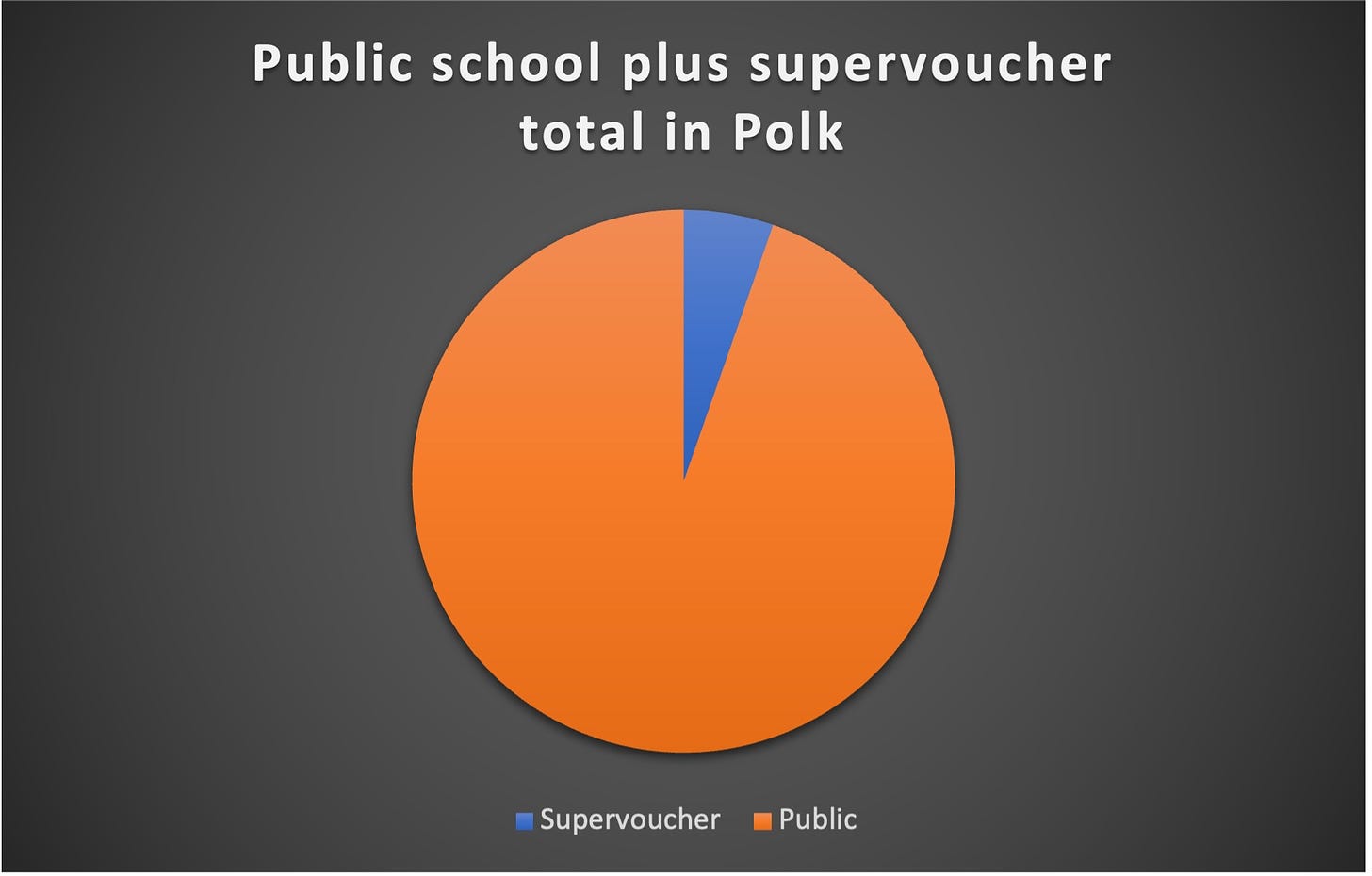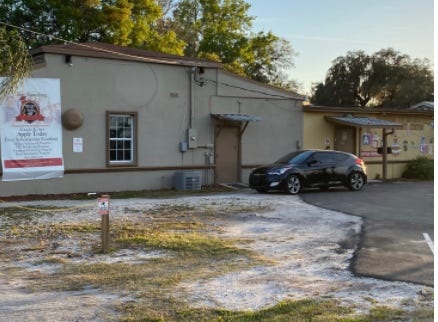Florida's new super-voucher is producing grift hyper-inflation while stiffing disability parents
Florida's new ESA-based super voucher is serving fewer kids with disabilities, but has more than tripled per student cost to local districts, according to early data. What is going on?



In the 2021 Florida Legislative session, Ron DeSantis mashed together Florida’s five individual voucher programs into one giant super voucher.
DeSantis combined these vouchers …
Florida Tax Credit
Hope (Bully)
Florida Empowerment
Gardiner (for disabilities)
McKay (for disabilities)
… into one Florida super voucher rolled into the “Florida Empowerment Scholarship” (FES) with two tracks — general population and students with disabilities.
[The old Florida Empowerment and Hope vouchers had essentially zero usage for reasons not worth explaining. But they existed, so I included their names but didn’t even try to do a number for them.]
This new FES super-voucher is also sometimes called an educational savings account (ESA). Replacing public schools with universal ESAs is a longstanding fantasy for privatizing grifters like Jeb Bush and his dwindling minions.
About this time last year, when I was writing my 5-part “Jeb Crow” series about Florida’s dreadful, segregated, 61-percent, two-year dropout rate voucher school provider network, I made a prediction: the ESA voucher mashup would produce huge voucher grift inflation. I predicted the cost per child of using a voucher would spike because there is almost nothing worth buying in the voucher school marketplace.
Kelli Stargel and Manny Diaz are going to stir together all the voucher programs into one giant cauldron of money and then give people something called an Education Savings Account (ESA). Then you go use your debit card to purchase education services through a buyer beware “marketplace” of grift.
They do this while seeking to dismantle actual public schools. It’s the educational equivalent of dismantling Publix and giving everybody a debit card to shop for groceries at a dollar store…
…The smartest way to shop for a voucher school is not to shop for one at all. There are very very few worth buying. This is why the education savings account (ESA) concept is doomed as anything but grift.
When Kelli Stargel dismantles your educational Publix this legislative session and gives you a dollar store debit card for educational groceries instead, it doesn’t mean the dollar store gets anything better on its shelves. The dollar store doesn’t have the capital or product development systems that Publix has built over decades. The dollar store doesn’t have supermarket capacity.
There is almost nothing worth buying today in the ESA dollar store; and there will be almost nothing worth buying in the future.
And the same group of grifter garbage voucher providers will just take more money from you, the taxpayers, to cheat and harm and segregate the socially, economically, and educationally vulnerable. The grifters will be able to charge them — and thus you — more money with an ESA.
But even I didn’t expect vouchers to cost taxpayers and tax sheltering corporations roughly 300 percent more per kid. And yet, that’s what Polk County seems to be projecting for the coming year. And other districts, like Leon, are reporting a similar dynamic. (See chart above.)
What is going on?
The Step Up for Students super-voucher serves *half* as many kids with disabilities as McKay/Gardiner did at much greater cost. Why?
You’ll never get an answer to “what is going on?” from corrupt and incompetent Step Up for Students, the unelected state “school board” of vouchers.
SUFS and its long-time emperor Doug Tuthill do not want anyone to know anything about vouchers with precision, especially enrollment and scholarship abandonment (drop-out) data.
Anecdotally, I hear and see horror story after horror story from parents of the former McKay/Gardiner disability parents — particularly regarding SUFS’ incompetence and dreadful customer service. Former Gardiner/McKay parents have a seething private Facebook advocacy page full of these stories.
It’s hardly surprising these “choice” parents are angry. SUFS is screwing them.
Somehow, with all that new grifter money from the super voucher, SUFS is serving way fewer Florida students with disabilities — at much higher cost to the public — than the combined McKay/Gardiner vouchers did. It’s 25K now to 46K under McKay/Gardiner, according to the publicly available data.
Why? ¯\_(ツ)_/¯
I’m sure SUFS’ abysmal customer service and rank incompetence does not help. Here’s just one example from this week from the advocacy page:
Here’s another example. SUFS hasn’t even updated its “Find a School” parent portal to reflect the end of the consolidation of vouchers into the “Florida Empowerment Scholarship.” It’s still using the old names.
I took the screen shot below on April 19th. This is what parents see:
Keep in mind that Step Up for Students is a “charity” sitting on as much money as the American Cancer Society.
Before the 2021 infusion of cash, it was collecting giant commissions for doling out $700M in tax and tax-avoidance money with no quality control or oversight of any product in its marketplace. But they can’t hire a web designer?
SUFS leader Doug Tuthill should have been tossed out in disgrace like Richard Corcoran long ago for rank incompetence and inability to run an organization.
Questions/thoughts for the grifters and the districts
To piece together this basic data picture of total enrollment/costs of the five vouchers last year and the projections for 22-23, the first full year of ESA/super voucher implementation, I’ve cobbled together numbers from several news stories and this study from the CERES Institute.
The news stories are here and here. And they are confusing. Here are some questions/tentative observations that will need additional fleshing out with better data and explanations.
What does it mean for districts to “lose” money to the new super voucher? Where does Polk’s $34M new “loss” come from? It’s not growth in users.
The Ledger story headline says Polk expects “to lose $48.8M to scholarship program” after “losing” $14.4M in the old system. That’s a $34M increase in “loss;” but the story also says only 5880 kids will be using the super voucher, including the disability track. That’s not much overall growth from the 5254 kids using $14.4M in old vouchers in Polk. (I extrapolated 5254 from statewide population figures and previous reporting.)
And the “lose” question is strange.
Districts don’t get billed, as far as I understand, for voucher costs. It’s just that voucher kids don’t bring the funding into the district. So districts miss out on potential revenue.
I suspect this relates to adding the super voucher into the overall state funding program; but I still don’t quite get how it’s a budget hole or how the voucher cost per kid is so much higher.
How can kids never in the public system be costing the public system money? Has there been a cost/accounting shift?
As the story from Tallahassee noted, the new super voucher extended eligibility to kids have never enrolled in a public school — meaning that they get money from the state to help pay the tuition they’ve been paying all along.
Is the big cost jump just driven by taxpayers footing the bill for more kids at Lakeland Christian who have never attended public schools?
In Leon County, that appears to be a big part of their revenue loss; but again; I don’t see how. It shouldn’t affect district budgeting because those kids have never brought their allocation into the public school system. They didn’t leave the district and thus take their allocation with them.
And again, the voucher enrollment numbers aren’t that different, despite massive expansion of eligibility by income level and private school attendance.
And yet the lost revenue is wildly different. Why?
Why does the super-voucher serve fewer kids with disabilities than Gardiner/McKey, but cost taxpayers/donors much more than it did per kid?
Good ESE/disability education and services are expensive, more expensive than general education.
So how is it that the “Florida Empowerment” super voucher w/disabilities is serving 25,000 kids, while McKay/Gardiner served 46,000. That 25,000 number comes from the Tallahassee Democrat story above.
And how, in that world, is the super voucher “costing” Polk $8,300 per child versus $2,740 in the old system. That makes no sense.
*Private* education is incapable of serving even this tiny sliver of kids adequately, in part because vouchers have destroyed it
Here’s Polk County’s percentage breakdown of public school kids (including charter) + super voucher kids. That’s roughly 121,000 kids projected for next year. Super voucher kids are less than 5 percent of overall education population. And some of those kids use the disability vouchers at public schools.
Despite all the stupidly hideous attacks from disgusting politicians, parents in Polk County are voting with their feet.
And my hypothesis is that virtually all “growth” in students using the super voucher comes from kids who weren’t in public schools — who aren’t leaving public schools. But that’s a hypothesis that needs testing with clearer data.
The Polk public district is growing fast.
So all of this super voucher emphasis and fake care for “parental choice” is just a middle finger at the overwhelming number of what most parents choose.
And it’s a middle finger backed by nothing.
The private *system* could not remotely handle even a mild expansion of that blue pie slice above, not with voucher abandonment rates so high and median private school quality and capacity so awful.
Vouchers kill private education quality
We often talk about the damage vouchers and the fake “choice” grift do to public schools. But the damage to *private* schools is much worse.
The median private school in Florida is an absolute shit show because of vouchers. That’s what my Jeb Crow series is about. Here are a couple examples of super-voucher schools in Polk County.
How does it feel, Gardiner/McKay parents, to have Doug Tuthill get rich off funneling tax money to these “schools” while you can’t get ESE services?
Here in Lakeland, the most voucher-dependent reputable private school — St. Joseph’s Catholic School — recently shut its doors after 70 years because it got too dependent on vouchers that could not pay the cost of decent quality operation.
Indeed, for all the Corcoran/Tuthill/grifter efforts to kill public education, very few kids relative to overall school population use vouchers. And those kids constantly abandon their vouchers because the median private school is not Tampa Jesuit or Jacksonville Bolles or Lakeland Christian — it’s a grifter-operator shit show.
The only marginal voucher “success” had been McKay and Gardiner and the specialized ESE services they helped fund; and now SUFS and the grifters are killing it. I’d be an angry McKay/Gardiner parent, too. I did try to tell everybody.
Your legislature and governor and Doug Tuthill have obviously chosen to stick it to former Gardiner/McKay parents and kids while sending the big money to the failed super voucher general education “schools.”
And as I predicted, that seems to be stoking grifter hyper-inflation that has very unpredictable consequences in an election year.








